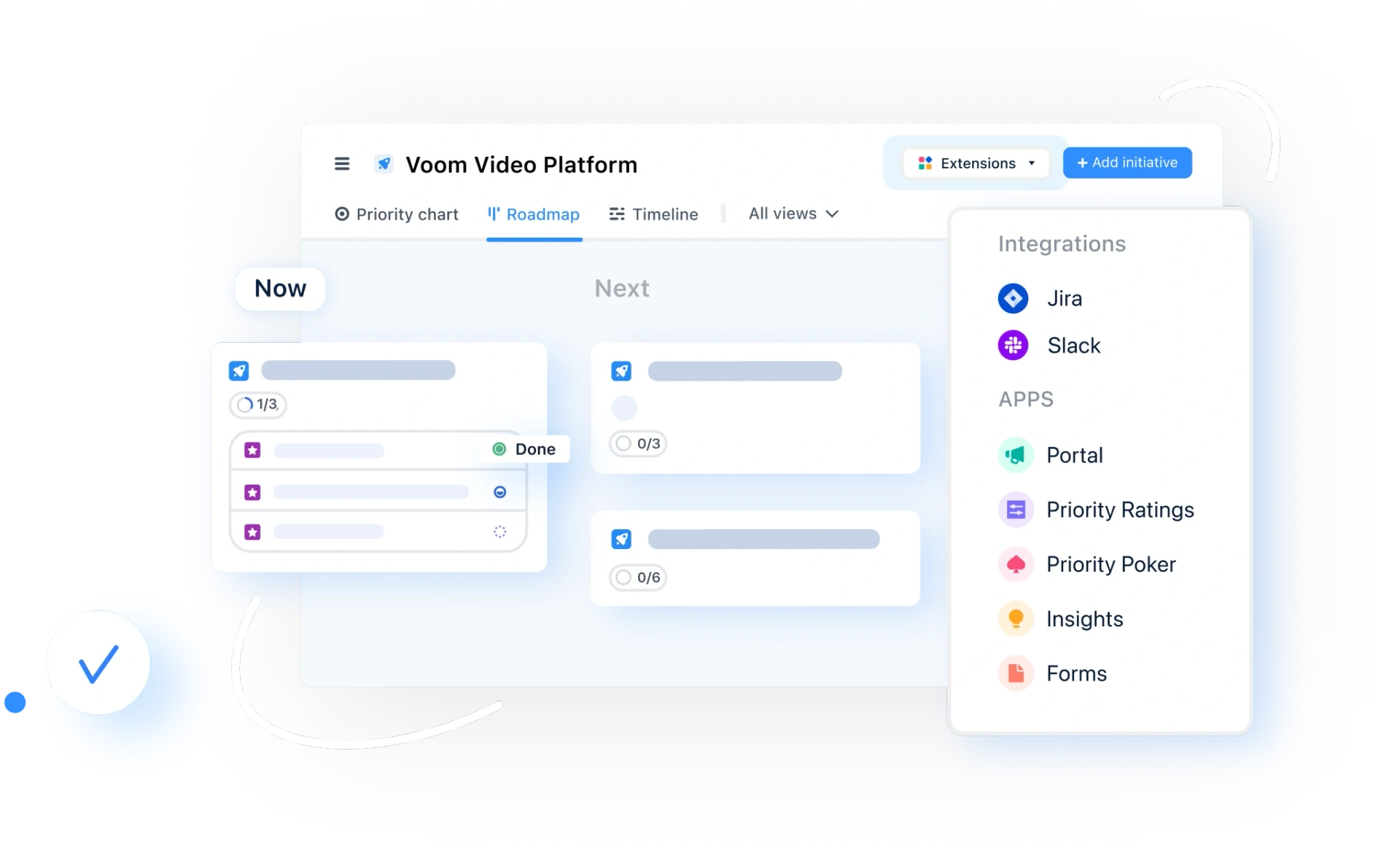5 ways AI will impact product management – Marty Cagan's predictions

AI isn’t just another tool – it’s reshaping how products are built, teams are structured, and companies compete. For product leaders, 2025’s biggest question is simple but daunting: What does this shift mean for us?
To get answers, we sat down with Marty Cagan – author, founder of Silicon Valley Product Group, and former SVP of Product & Design at eBay. Known for shaping how modern product teams work, Marty shared candid insights on how AI will transform roles, risk, and the way we think about product.
Here are his four biggest takeaways every product leader should hear.
Jobs and role expectations
When mobile apps dominated the tech space, workplace strategies shifted, new roles emerged, and some became irrelevant.
Now that AI is growing in prominence, similar trends are arising. And there’s one similar issue product teams should prepare for: Job loss.
Who in product is most at risk from AI?
“Product owner is a role in the delivery process, and that is a very easy kind of thing for an assistant to make a big dent into,” Marty explains. “European style Product Owners: you have to realize, if you've been trained with CSPO or PSPO, that is not a secure job. I think those people are at big risk right now. They're not just in Europe, they're all over the world, but especially there, I'm encouraging them to upskill as fast as they can.”
The risk of job loss amongst these roles depends on how smart tech will be in the next five years. And, as Marty says, “The answer to that question will dictate what a team looks like if there is even a team.”
One role that Marty believes is in less immediate danger: Feature Team Product Manager. Overall, their role resembles a Project Manager, and while a lot of their tasks will be automated, we’re not there yet.
“Product managers have a little more time,” says Marty. “But fundamentally, they need to look at what is the real contribution and it needs to be Product Management.”
These are the ones responsible for outcomes, solving real customer problems, and are simultaneously in high demand.
AI won’t hide a bad product
“There are new products coming out all the time, some of which are amazing and some of which are awful,” notes Marty. The problem: many use AI as band-aids for deeper issues.
“People are using it to come up with product roadmaps, and they still have their crappy roadmaps. They're just doing them faster.”
Using AI isn’t just a solution to spend less time building in Jira, because, as Marty points out, “the real issue isn't that: the real issue is what are you building?”

For many, it’s simply allowing them to do a better job at the wrong things.
In situations like this, Marty notes, “The amazing thing is for those that really know what Product Discovery is, this is an amazing era. It has never been better.”
Know the risks
The product risks associated with AI existed even before AI. Depending on what your product is, the risks differ in severity. But Marty identified four key areas to assess if AI is going to help or hinder you:
Value: Is it providing value? Is it demonstrably better for the customer?
Viability: Is it helping or hindering you? Can you market it? Is it sellable? Is it expensive? Are there legal limits?
Usability: Will it be intuitive for the user to navigate?
Feasibility: Does your team know how to leverage this technology? Is it feasible with your timeline?
After tracking viability and feasibility risks, you can move on to assessing things like quality assurance. And with generative AI, quality testing and assurance look a little bit different.
“One of the examples I love is they have a couple thousand cars at Waymo on the roads in a few key cities in the US, with millions of miles being tested,” Marty says. “Every single day, each of these cars is driving people for hundreds of kilometers. Every car is learning as well as running, right? It's learning, it's seeing new situations.”
This feedback loop allows cars to experience new scenarios daily, and they’re fed human direction on how to respond, making them increasingly smarter.
“Imagine if you've got thousands of cars doing thousands of miles, think of how the aggregate model gets smarter,” explains Marty. “There is no person alive that has more miles driven and experience than the aggregate of all of their cars.”
Start empowering and upskilling today
If you don’t upskill your team early, you risk running into the same issues managers did with the rise of mobile apps.
“What a lot of those companies did was they didn't train their people on mobile. The smart ones did,” Marty began. “What they did instead was they hired an agency to do the mobile work for them. And they ended up with these totally separate tech stacks – separate everything – ended up throwing it away, having to redo [it] all, and spent a whole lot of money because they didn't think they should, or could, do it.”
Marty notes that the same patterns will repeat themselves with AI. Companies that want quick fixes and marketing responses are depending on agencies. And while perception is important, everyone will have a story about AI down the line.
The ones who use it right are most likely to be future-proofed.
Marty urges AI upskilling to be a business-wide investment, not restricted to a couple of specialists. If you’re an AI-first company, you must walk the walk and spread competency across the organization.
“I would argue that the most critical role for a company are product leaders that understand this,” he urges. “They're the ones that need to drive this whole discussion.”
The future of product management
As AI grows, the expectations are already skyrocketing for product teams, but we’ve only scratched the surface.
“What makes this discussion so hard is that almost every day things are changing,” says Marty. “AI is a goldmine of opportunity. It's also the biggest threat to how we do products.”
The key: Don’t resist it, and always keep learning.
Additional resources
How AI will shape product management – Webinar with Marty Cagan
The true value of AI in product management (insights from Dr. Bart Jaworski) – Nouran El-Behairy
AI-Powered Feature Request Management: Streamlining Feedback into Action - Sami Rehman
The Pros and Cons of Using AI in Customer Insights - Sami Rehman
Integration of AI in Product Design and Development - Adam Thomas
Will ChatGPT Really Change Product Management? - Andrea Saez
Augmenting Product Management Excellence with AI: Beyond the Hype - Malte Scholz
Emma-Lily Pendleton

Read also



Experience the new way of doing product management

Experience the new way of doing product management




